France
Paris
Welcome to
What truly breathes life into a city? At CBA Design, we believe it’s the unseen rhythms, the subtle nuances, the flickers of authenticity that give a place its soul. Design is everywhere: in the grace of a storefront, the silhouette of a building, or the ephemeral poetry of a poster pasted to a wall. It lives in the contrasts—between official art and spontaneous creation, the familiar and the unexpected.
This is the spirit we set out to capture with Pulse of the City, a travel guide imagined as a journey through the heart of fourteen cities where we live and work. Each one pulses with its own rhythm, revealing secrets tucked within. More than a guide, it is an immersion into what fuels our creativity every day: places steeped in history, textures that spark ideas, and encounters where nature, design, and innovation converge.

Paris—eternal capital of elegance—is a living museum of design in all its forms. Among its gems: Bouillon Chartier, an iconic address that captures the soul of Art Nouveau.
This late 19th-century movement, with its sinuous lines and floral motifs, rejected rigid classicism in favor of expressive, ornamental detail. At Chartier, sculpted woodwork frames towering mirrors, ceramic murals by Louis Trézel grace the walls, and filigreed lighting floats like airborne poetry.
Classified as a Historic Monument, Chartier is more than a restaurant—it’s a step back in time. A tribute to an era when art and craft merged to beautify daily life. Here, tradition meets generosity, and history is savored just as richly as the cuisine.

New York—ever-awake, ever-evolving—is a design lover’s playground. Here, exuberance and elegance collide at every corner. In this whirlwind of influence, we stumbled upon Oscar Wilde, a bar where the glamour of the 1900s Victorian era meets bold, contemporary maximalism.
It’s an ode to a style that defies restraint—layering textures, patterns, and color in lavish harmony.
Stretching 36 meters, the longest bar in New York is a journey through time. Gilded detail, rich velvet, hand-carved wood—each element is a living fresco of a bygone age. Clocks paused at 1:50 nod subtly to Wilde’s tragic fate, while the Carrara marble bar top honors timeless craftsmanship. Here, opulence and modernity aren’t in opposition—they’re in exuberant conversation.
A shift in tone: Madrid, where Mediterranean warmth meets contemporary clarity. Nestled within this vibrant city lies Casa Neutrale—a minimalist haven in its purest form.
Rooted in Bauhaus principles and Japanese wabi-sabi philosophy, minimalism here honors functional beauty and raw materials. The space speaks softly but deliberately: natural stone floors, a monolithic granite table, unadorned walls inviting light to shape the room. Every choice is purposeful, shedding the superfluous in favor of serenity.
Time seems to stretch here, inviting pause and presence. More than a café, Casa Neutrale is a sanctuary of stillness—where simplicity becomes immersive, and refinement whispers through restraint.
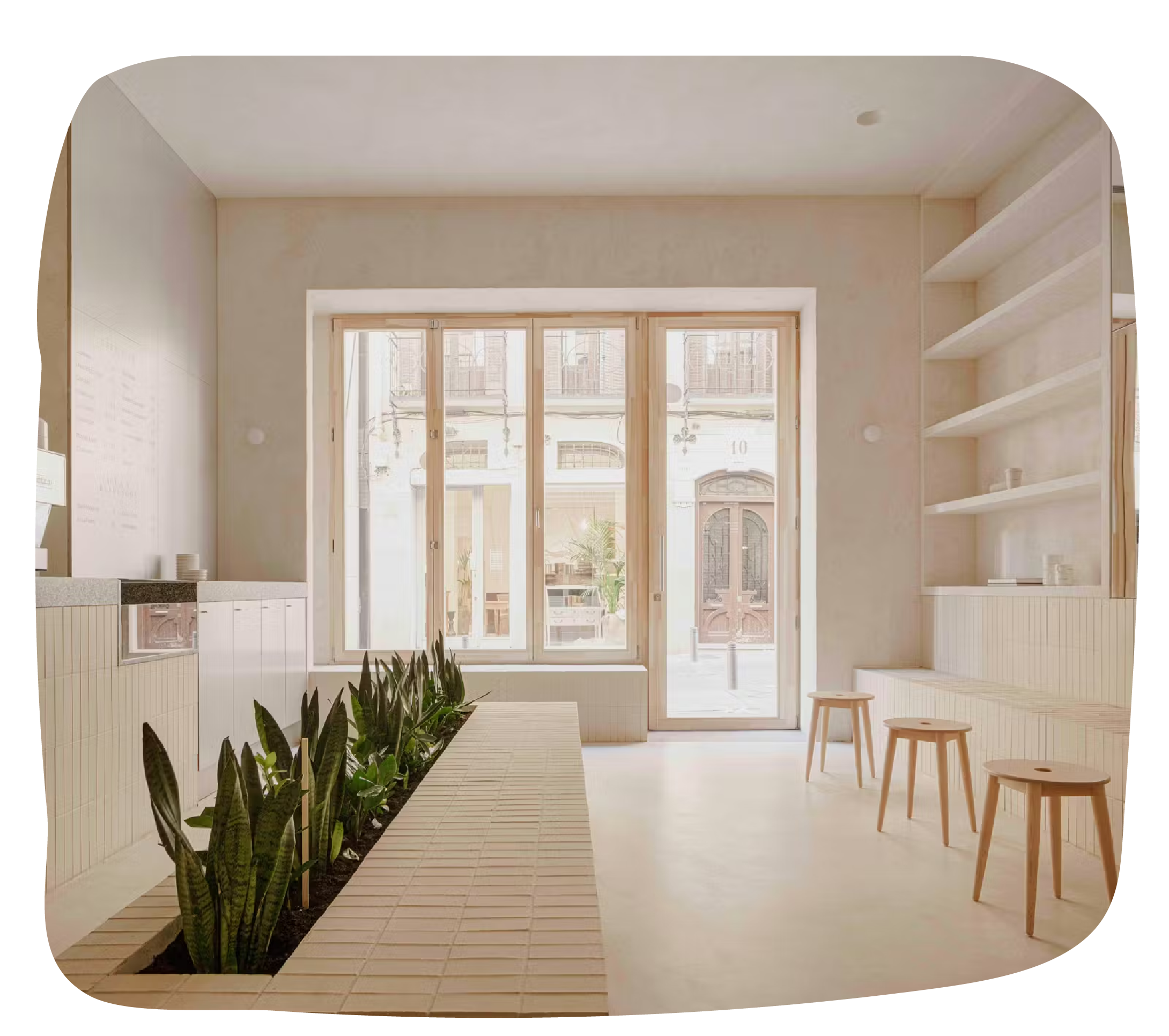

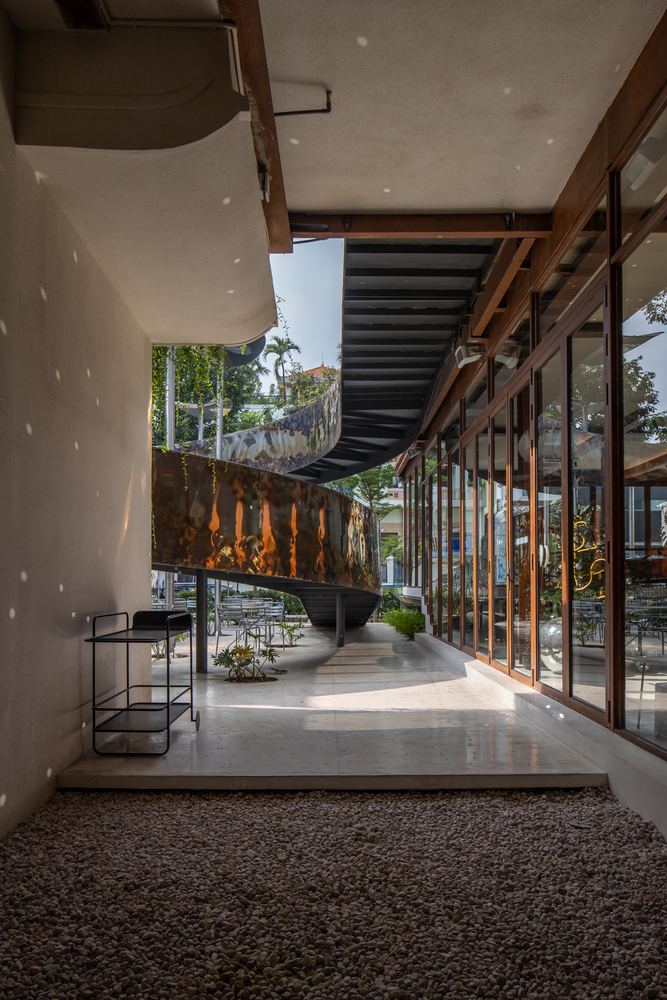

Ho Chi Minh City—a cauldron of motion and reinvention—is home to a rising artistic scene where past and future entwine. De La Sól captures this fusion: a hybrid space uniting galleries, cafés, and shops in vibrant harmony.
Here, architectural storytelling takes center stage. The preserved façade of a historic villa anchors memory, while a modern steel-and-glass structure rises behind it, joined by a sculptural looping staircase. Outside, kinetic sculptures dance with light, turning space into a living experience.
De La Sól offers more than art—it proposes a new lens on evolving urbanism. A manifesto where design, architecture, and creativity mirror a city in metamorphosis.
Istanbul—crossroads of civilizations—reveals its most intimate treasures in its ancient alleyways. Tucked between Hagia Sophia and the Blue Mosque lies the Hürrem Sultan Hamamı, a hidden gem that radiates Ottoman elegance.
Commissioned in 1556 by master architect Mimar Sinan for Roxelana, wife of Suleiman the Magnificent, this hammam is an ode to refined tradition. After a century of silence, it has been reborn—where every detail, from Marmara marble to the play of filtered dome light, is choreographed to heighten the senses.
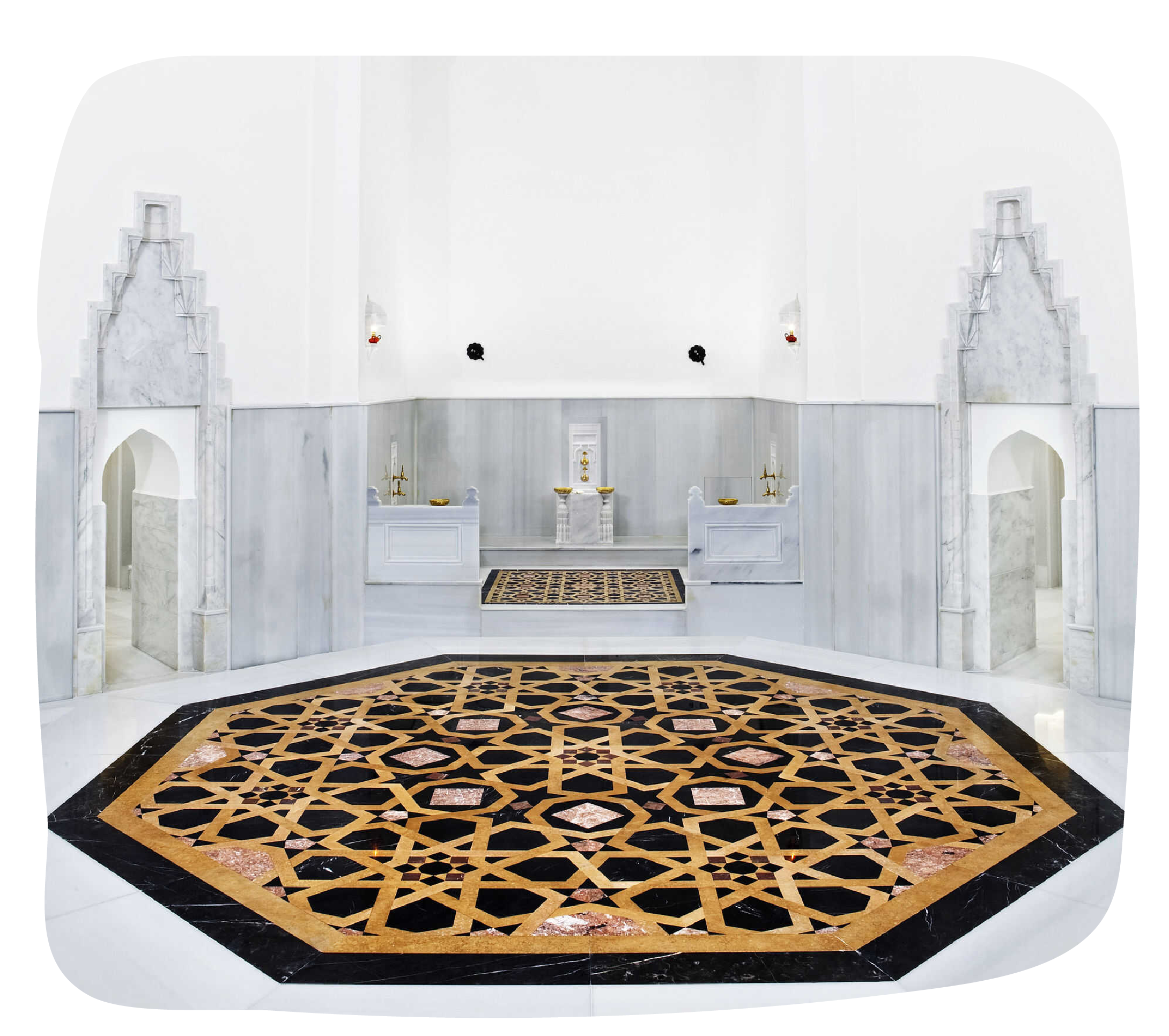
The hammam’s symmetrical layout, revolutionary in its day, reflects a vision of design rooted in flow, function, and harmony. Here, the body unwinds and the spirit journeys. The Hürrem Sultan Hamamı is where heritage meets sensory design—a place that resonates with how we imagine spaces: immersive, soulful, alive.
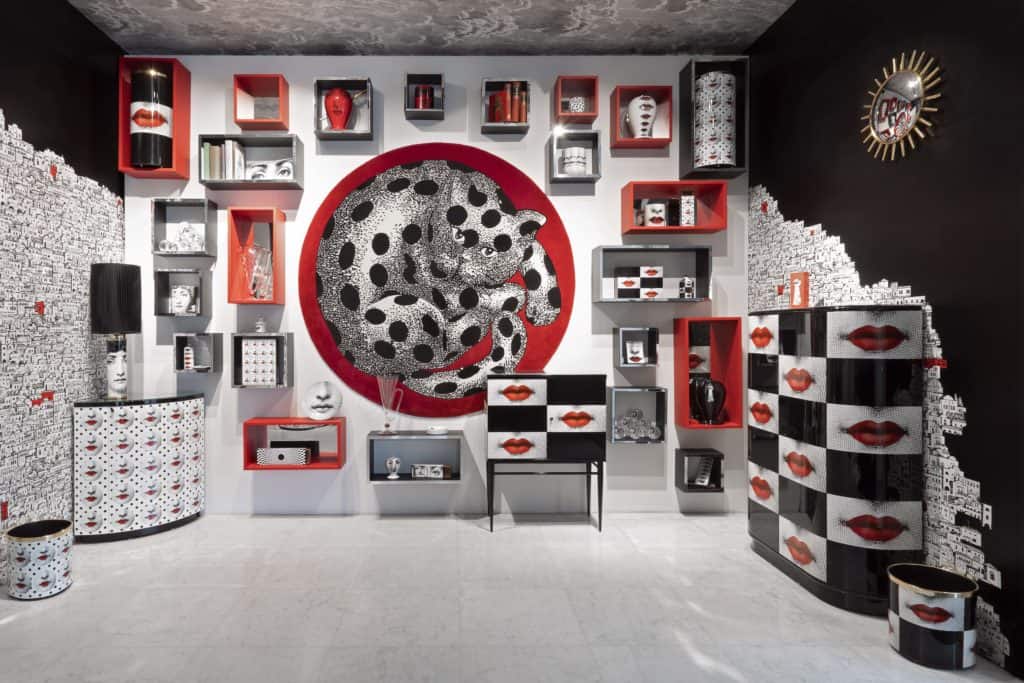
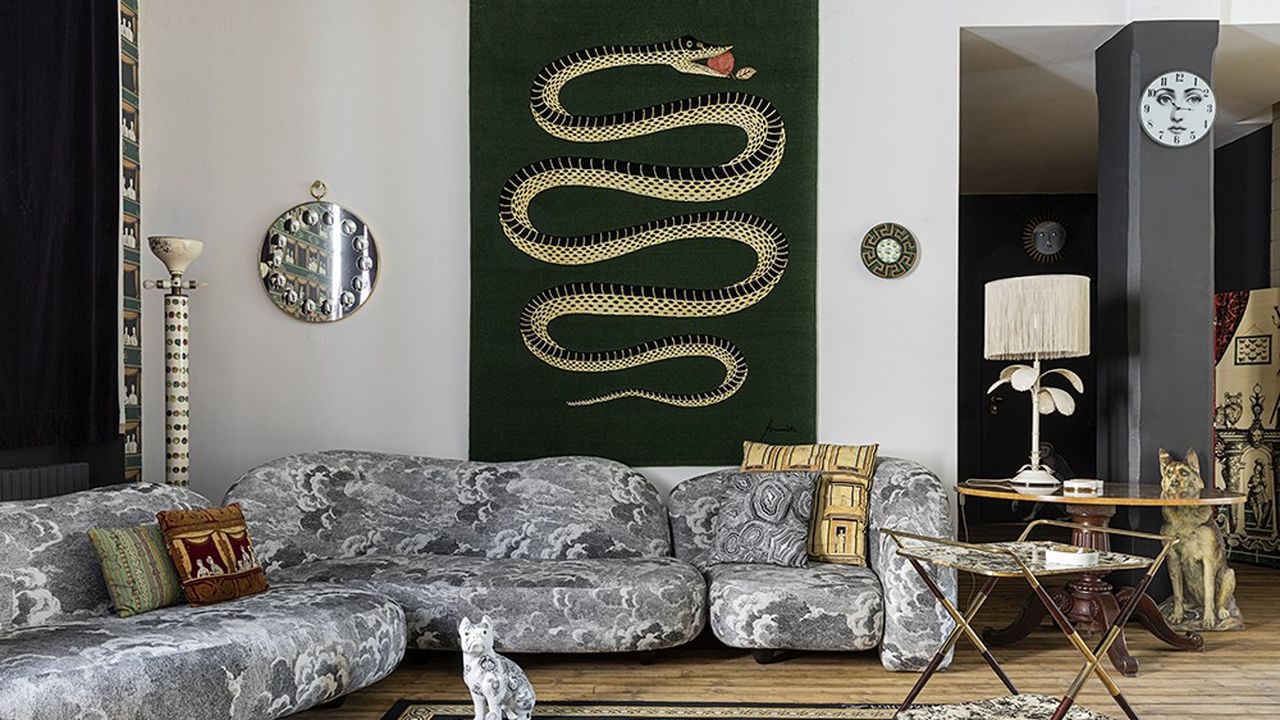
Next stop: Milan—the global design capital, where every street corner tells a new creative story. At the heart of this pulse lies Fornasetti, a house synonymous with visionary spirit.
Founded by Piero Fornasetti in the 1940s, this Milanese atelier redefined design by transforming everyday objects into surreal artworks. Furniture, porcelain trays, wallpaper—all marked by hypnotic graphics, enigmatic faces, and trompe-l’œil illusions. Today, his son Barnaba carries the torch, blending classical heritage with contemporary boldness.
The Milan flagship is part boutique, part gallery—each piece whispering cultural references through a language uniquely its own. This space is a celebration of audacity, invention, and the poetry of design in its most expressive form.
From sprawling metropolises to quiet creative enclaves, each destination is a note in the urban symphony, shaping the way we inhabit our world. This journey through aesthetics, cultures, and innovation is a boundless source of inspiration—reminding us that design is a living force, capable of transforming spaces and experiences alike.
As designers, we see in this energy a powerful opportunity. Brands have a vital role to play: channeling cultural richness, crafting meaningful and lasting experiences, and weaving deep connections with local communities.
At CBA, we help brands translate their vision into tangible realities—grounded, inspired, and deeply connected. Because beyond aesthetics, design is a strategic catalyst—a vessel of meaning and emotion, in service of brands that are more human, more rooted, and more culturally attuned.
The world of design has been inspired by countless creative minds, but behind many iconic works are pioneering women whose impact on design is immeasurable. These women have broken barriers, pushed boundaries and transformed the norms of the design industry, making a significant contribution to its evolution.
The inspiring stories and remarkable achievements of some of these female figures have played a central role in shaping the landscape of design, from architecture to furniture, interior design and beyond. Their work and legacy continue to shine in the design firmament, inspiring current and future generations to push back the boundaries of creativity and innovation.


Her avant-garde creations, including her famous round armchair with its tubular “Bibendum” design, appealed to an elegant clientele in search of furniture revolutions. At the end of the ’30s, Eileen Gray turned her attention to her major work, a seaside villa named E-1027, which would become a jewel of modern architecture. Died in 1979, Eileen is still the creator of the second most expensive piece of furniture in history, with her dragon armchair dating from the late 20s, sold for 21.9 million euros at auction in 2009.
A visionary creator, Charlotte Perriand is undeniably one of the 20th century’s leading figures in architecture and design. Born in 1903, Charlotte Perriand turned to architecture following a hospital stay for appendicitis.




A designer to be sure, but also and above all a committed humanist, she campaigned against fascism and for the working classes. Among her plethora of achievements and commitments, it’s essential to remember Charlotte Perriand as a pioneer who revolutionized the place of women in the kitchen with her daring open kitchen concept, designed for the Cité radieuse in Marseille, a radical idea for its time. She demonstrated once again that design goes beyond artistic expression, constituting a powerful lever for social change.
The early 20th century saw the birth of Ray Eames, whose real name was Bernice Alexandra Kaiser Eames. An American architect, filmmaker and designer, she had a major influence on the Streamline movement, which was the Modern era’s push for more fluid lines in furniture.
Bernice graduated in 1933 and moved to New York to explore her artistic passion, taking courses in modern dance and expressionist painting until 1939. At the same time, she founded the AAA (American Abstract Artists) in 1936, a group of amateur abstract expressionists, and became a major figure in the movement.
It was at the Cranbook Academy of Art in Michigan that Ray met her future husband Charles Eames, with whom she designed unique furniture and quickly established a solid reputation in the design world. Unlike other design couples of the time, their major pieces were co-designed, such as the Eames Lounge Chair. Despite this, history has often tended to remember only the name Charles Eames.


Her rationality in design emphasizes the relationships between objects, optimizing space and the cost-benefit ratio. Constantly experimenting with plastic, she has created mass-produced products accessible to all, promoting easy storage.
Winner of numerous awards, including the Compasso d’Oro, a prestigious Italian award for industrial design, her creations continue to be produced, testifying to her lasting impact. Her design approach, combining the useful with the pleasurable, continues to influence many designers.

The exceptional legacy left by these pioneering women still resonates today in the world of contemporary design. Their ingenuity, creativity and determination transcended gender barriers, paving the way for new perspectives and challenging the place of women not only in design, but also in our everyday lives. Their impact is measured not only by their iconic creations, but also by the inspiration they continue to bring to succeeding generations. Celebrating these visionaries reminds us of the importance of diversity in design, inviting everyone to embrace boldness and innovation in this timeless discipline.
The building sector generates the same amount of waste annually as 1.5 times the production of household waste by the French – according to the Ministry of Ecological Transition. This sector alone extracts over 30% of the planet’s natural resources globally! 🧐
We need sustainable development for constructions of tomorrow! Let’s put an end to concrete construction sites that cause pollution; it’s time for awareness of the environmental impact in the retail sector.
And what about design? By using natural ressources, sustainable design rethinks the ecological impact of spaces and considers the entire life cycle of materials, from their conception to their disposal.
Feel inspired? Let’s focus on the top 5 eco-responsible materials for sustainable retail.
Traditional building material, raw earth clay is making a big comeback in today’s constructions. Composed of clayey soil mixed with plant fibers, it is primarily used in block or brick construction.
Not only is earth a renewable natural resource, but it also provides excellent thermal insulation and regulates humidity, contributing to a healthy and energy-efficient indoor climate. In short, it is abundant, cost-effective, and eco-friendly!
Natural: Due to its abundance, the extraction of earth has a low environmental impact compared to other construction materials.
Insulating: Its thermal insulation capacity helps reduce the energy consumption needed for heating or cooling buildings.
Regulating: Earth has the ability to regulate humidity inside buildings, contributing to a comfortable and healthy indoor climate.

From the chocolate industry, it is possible to transform cocoa bean waste into a durable construction material that can be applied to walls, floors, or ceilings! It is mixed with sand and cement to enhance its strength and durability.
The advantage? Cocoa bean waste is an ecological alternative to the industrial waste generated by the chocolate sector and provides durability and excellent thermal insulation properties.

Recyclable: By using cocoa industry residues, this material contributes to waste reduction and the valorization of by-products.
Insulating: Cocoa bean waste helps reduce the energy consumption needed for heating or cooling buildings.
Resistant: This material is generally robust, making it suitable for various types of construction.
Aesthetic: The part built with this material offers a unique and warm aesthetic thanks to its natural brown hues.
Looking for a material that combines style and performance? Look no further than Fibralith! Composed of compressed and mineralized wood panels, it offers excellent thermal and acoustic insulation while being made from renewable resources.
Besides requiring less energy for manufacturing compared to many other materials, the wood used in Fibralith panels also contributes to reducing carbon emissions. Insulation and durability in one package? Yes, please!
Insulating: With its thermal and acoustic insulation properties, Fibralith contributes to reducing energy consumption and creating a comfortable indoor environment.
Renewable: Wood wool panels are made from wood, a renewable resource, and can be recycled at the end of their life.
Eco-friendly: Its manufacturing process requires less energy compared to other materials.
Regulating: Mineralized wood has a natural ability to regulate humidity, which can contribute to maintaining a healthy indoor climate.

Known as Piñatex, pineapple fiber is the perfect sustainable alternative to traditional leather, increasingly embraced by ethical and vegan fashion enthusiasts!
This innovative material is made from pineapple leaves, which are often considered agricultural by-products or waste. Its manufacturing process helps reduce the ecological footprint of the textile industry, whether in fashion or furnishing.
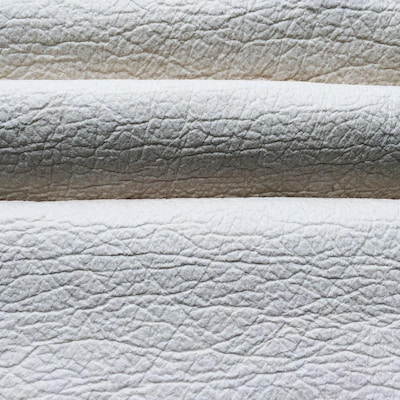
Sustainable: Its production requires significantly less water and agricultural land compared to intensive livestock farming needed for animal leather.
Vegan: Unlike traditional leather, no animals are exploited or killed for the production of pineapple fiber, out of concern for animal welfare.
Fair: Its production often benefits local farming communities in regions where pineapples are grown, contributing to the sustainable development of rural communities.
Versatile: Pineapple fiber is used in various industries, from clothing and shoes to furnishings and accessories.
Need some deco inspo? Choose Terrazzo! Made from fragments of marble, granite, or glass incorporated into a base of cement or resin, Terrazzo offers an infinite variety of patterns and colors. Besides being sustainable and wear-resistant, it also allows recycling of stone and glass waste.
Resistant: Terrazzo is renowned for its longevity and wear resistance, making it suitable for long-term use.
Aesthetic: It offers a wide variety of patterns and colors, making it a material appreciated for its attractive aesthetics.
Recyclable: Stone and glass waste from other industries can be recycled and used in the production of terrazzo, contributing to waste reduction.
Easy to maintain: Terrazzo requires minimal chemicals and water for cleaning.

CBA Design partnered with Valrhona in developing the retail concept for their boutique in Paris – an immersive and sensory space. With the aim of highlighting the brand’s CSR commitments (B Corp), CBA created a hybrid space that combines a retail store and a discovery area.
The boutique was designed using the 5 materials mentioned!
Congrats to the Retail & Architecture team at CBA Paris! 🔥
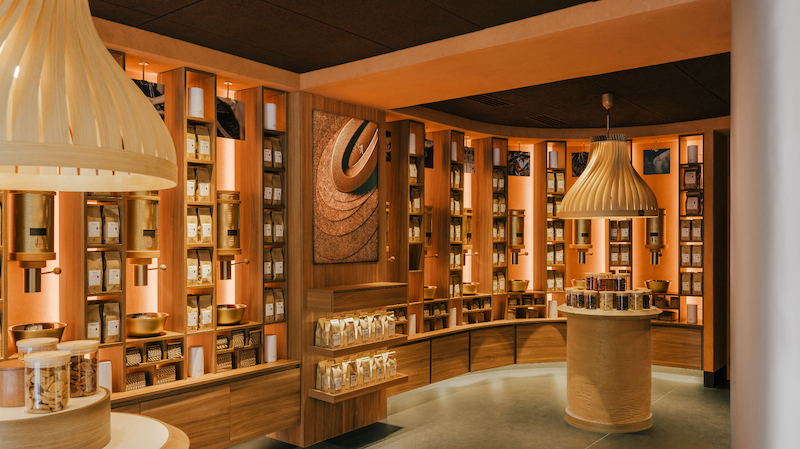
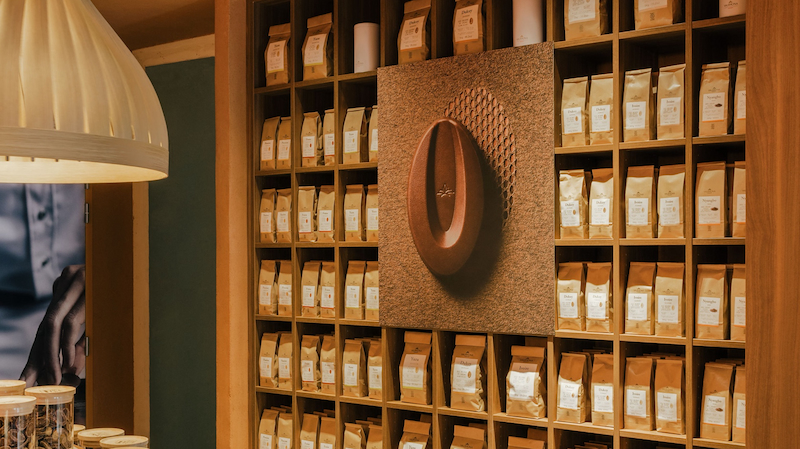
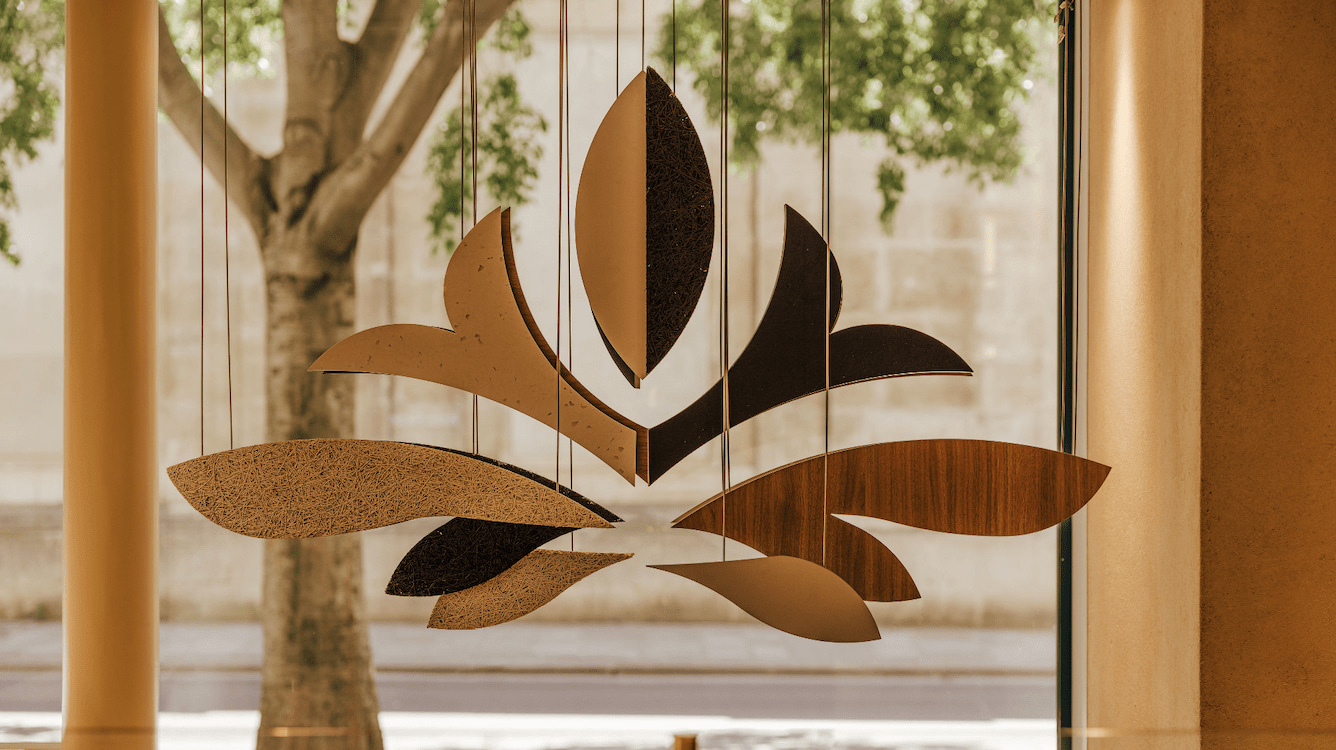
In any case, one thing is certain: there is indeed an eco-friendly alternative to the construction materials we know! From raw earth to pineapple fiber, nature offers us a multitude of resources that inspire the world of design.
The goal? To design sustainable retail concepts, reduce the carbon footprint of spaces, and, above all, create immersive and responsible customer experiences.
So, what’s your favorite material among this TOP 5? 👀